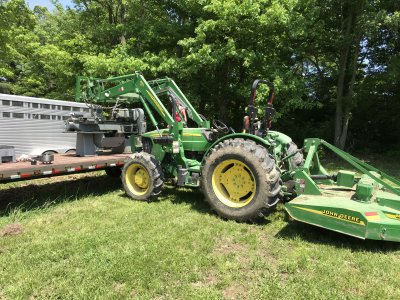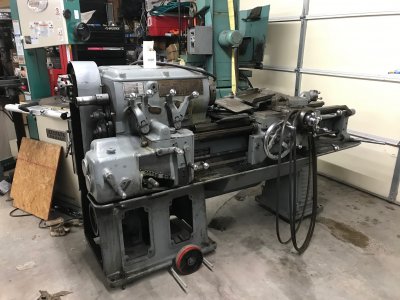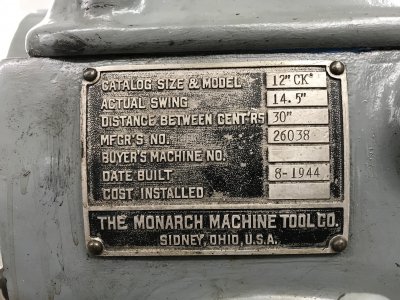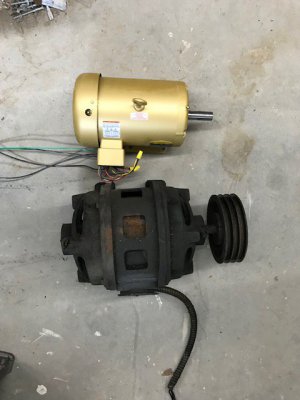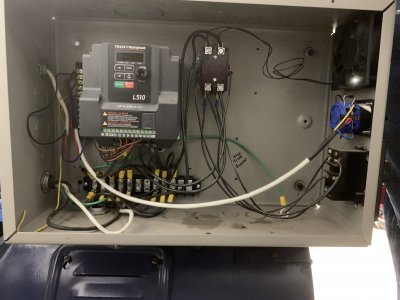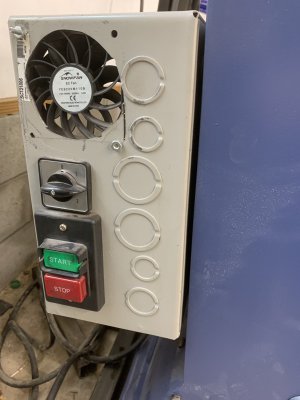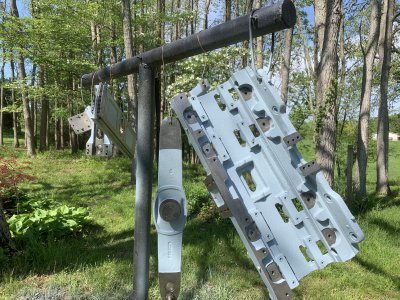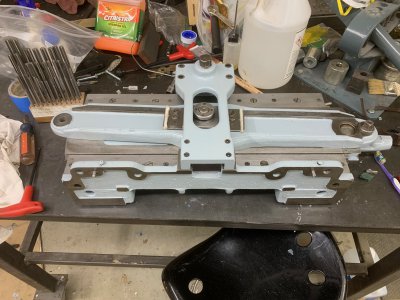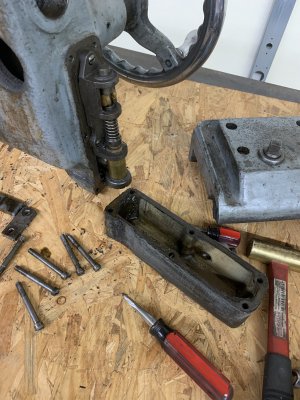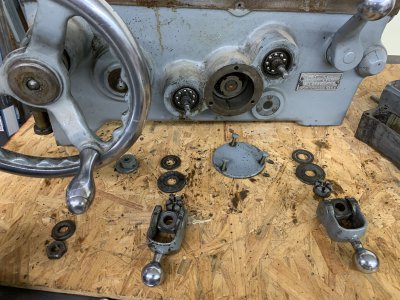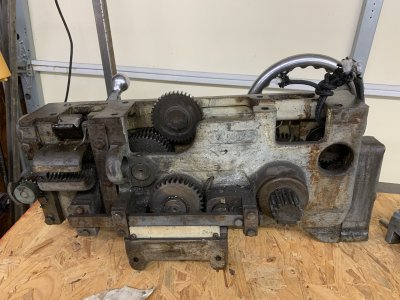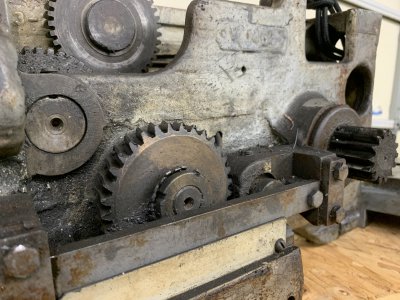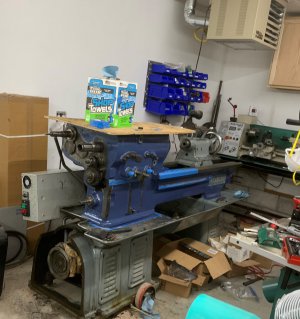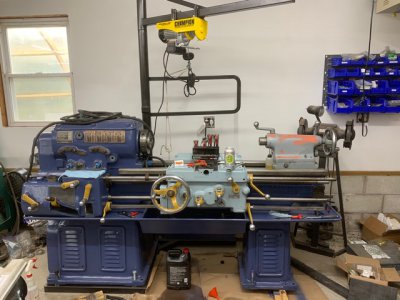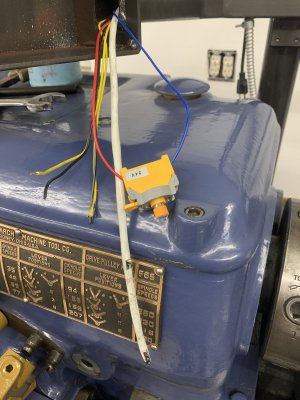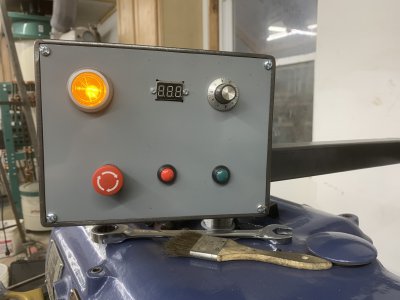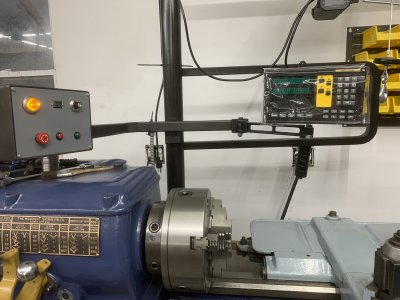After getting the apron fully disassembled, cleaned, painted and reassembled, I proceeded to do the same with the rest of the carriage. For the carriage I carefully cleaned out all of the oil passageways which lubricate the ways as well as the cross slide. Those don't provide lubrication to the compound's ways or to the the compound base where it rotates, so I drilled 1/8" holes for those and installed ball oiler caps to provide lubrication to those areas. I replaced the thrust bearings on the cross slide leadscrew. Unfortunately those size thrust bearings are not available, so I made up some small bushings to adapt a close fitting bushing. No good pictures here unfortunately, as none of those mechanisms where complex enough to need a photo guide for re-assembly.
When I put the carriage and apron back together and ran the lathe, it was pretty clear that the quick change gear box was making some obnoxious noises So that was next on the clean and disassemble list. I'd already taken the cover and face plate off once as part of removing the apron, getting the lead screw reverse rod out is a complex process.
One thing to say in all of this is that Monarch loves to put things together with taper pins. These are industry standard (you can get them through McMaster). Taper means 1/4" per foot. That taper is hard to detect across a 2" pin when it is driven through a bushing, and a little mushrooming from previously being hammered in/out can total obscure which is the larger end. Several place Monarch uses both a set screw and taper pins. This appears to be in places where the set screw was probably used to get the alignment correct before hand drilling the taper pin holes. Since the taper pin holes are hand drilled, they are NOT interchangeable. So the spindle speed levers (which need to come out to get the QCGB off) have both setscrews and taper pins, and these levers are not interchangeable even though they look identical otherwise. It's possible to rearrange things until you get a fit, but a few discrete marks with a carbide scriber are helpful. Also, Monarch is fond of using a locking set screw on top of a set screw. When digging through greasy parts these things can be easy to miss and more than once I was baffled why something wouldn't come apart until realizing this.
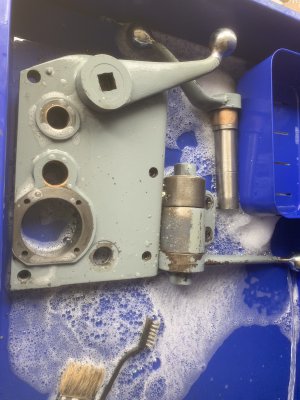
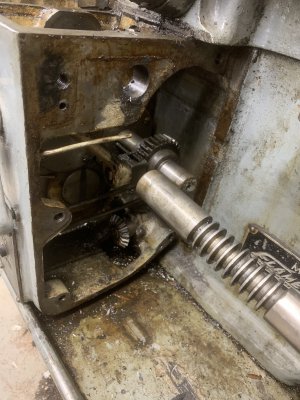
The quick change gear box was a real challenge is dissassemble. I relied heavily on posts on some other forums, and several youtube series, Keith Rucker & Machining360 in particular have some good series on older Monarchs. They are fairly similar in design across the different models in the 40's and 50's, so it isn't critical to find an exact match. The CKs, CKKs, CYs, CW's, K's, and early series 60's even use many of the same parts diagrams, at least the diagrams I received from Monarch.
I'm certainly glad I went through that gearbox, it was a mess and many of the bearings were in bad shape, as well as several bronze bushings. Here's what the backside of the gearbox looks like after coming off the lathe:
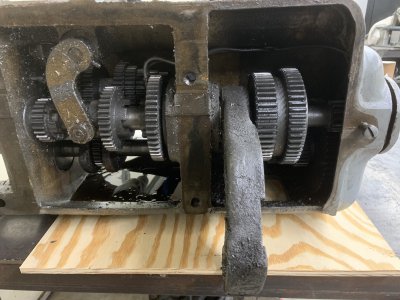
Lots to be learned about how these lathes work while doing all this. For one thing, while they look from the outside like they are fairly closed up, both the apron and the gearbox are not sealed and have fairly large areas where chips can get into the works (especially with the help of an air gun). For the gear box, the only oil comes from the two cups on top of the gearbox, which really do need to be filled with a shot of oil every day the lathe is going to be used. Also, the tumbler (handle on front of the gearbox under the feed/threading selection chart) needs to be in the leftmost position when oil is put into those cups, or it will not get oiled.
The quick change gear box was quite challenging to get apart, and contains a lot of bearings. Between the taper attachment, apron, gearbox, and end gears I probably have $1000 in bearings, as well as a lot of shop-made bronze bushings. I probably could have gotten away with not replacing some of the bearings but as complicated as these things are to disassemble and reassemble it was not something I wanted to redo.
